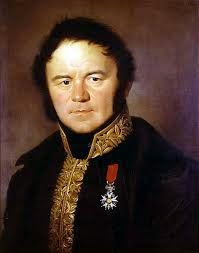by Angela Waller
The Snows of Yorkshire is the fictional story, told in five parts, of the Snow family who live in Yorkshire in the northeast of England. The story begins in 1415, and the father of the family, Richard, is away in France, fighting in the Battle of Agincourt. He sends a brief message home to say that he is well, as are all his men, and not one has been injured.
The house in which the family lives is already old, and several generations of the Snow family have lived there. When Richard returns, his wife, Kate, has to break the sad news to him that while he was away their only child, a son, has died. When, later, another son is born to the couple, Richard says that he would like this child to be named Crispin "because the Battle of Agincourt was fought on St. Crispin's day, and I believe it was through the saint's benevolent watch over us that we all came home safely." Thus a family tradition began; from then on, through the centuries, every first born male was named Crispin.
The second part of the story is set in 1592; alterations are made to the house so that it's outline is shaped as an "E" to honour the great first Queen Elizabeth who was on the throne at that time. Further decoration is added to the house to commemorate England's victory over the Spanish Armada.
In the third part of the story, set in 1679, after a period of England being governed by Oliver Cromwell, the monarchy has been restored and King Charles II is on the throne. The Snow family are establishing a reputation as horse breeders -- the horses are all white, appropriately for a family named Snow. One of their younger sons decides that, as he will not inherit the house and estate in England and after talking to some people about the new colonies in the Americas, he would like to leave England, go to Virginia and hope to become a tobacco grower. Some letters from him are kept in the family archives; he enjoyed his life there, married and started his own family.
The family's story continues in 1848; Queen Victoria was on the throne of England, and the industrial revolution was beginning. The Snow family had established a school in the local village to provide a basic education for the children of the families that worked on the estate and in the house; one of the Snow daughters is an enthusiastic teacher at the school. The Snows also started to build almshouses so that when their servants and staff grew too old to continue working, they had a place to live.
Part 5 opens in 2006; the house and its estate continues to be home to the Snow family, and for several days each year the house is open to the public to visit. Among the visitors one day there is a young American man who tells a family member that his name is also Snow, and it has always been said in his family that one of his ancestors came from this very place in England. And for the rest of the story... you will have to read the book!
Amazon
Angela's Website
Twitter
The Snows of Yorkshire is the fictional story, told in five parts, of the Snow family who live in Yorkshire in the northeast of England. The story begins in 1415, and the father of the family, Richard, is away in France, fighting in the Battle of Agincourt. He sends a brief message home to say that he is well, as are all his men, and not one has been injured.
The house in which the family lives is already old, and several generations of the Snow family have lived there. When Richard returns, his wife, Kate, has to break the sad news to him that while he was away their only child, a son, has died. When, later, another son is born to the couple, Richard says that he would like this child to be named Crispin "because the Battle of Agincourt was fought on St. Crispin's day, and I believe it was through the saint's benevolent watch over us that we all came home safely." Thus a family tradition began; from then on, through the centuries, every first born male was named Crispin.
The second part of the story is set in 1592; alterations are made to the house so that it's outline is shaped as an "E" to honour the great first Queen Elizabeth who was on the throne at that time. Further decoration is added to the house to commemorate England's victory over the Spanish Armada.
In the third part of the story, set in 1679, after a period of England being governed by Oliver Cromwell, the monarchy has been restored and King Charles II is on the throne. The Snow family are establishing a reputation as horse breeders -- the horses are all white, appropriately for a family named Snow. One of their younger sons decides that, as he will not inherit the house and estate in England and after talking to some people about the new colonies in the Americas, he would like to leave England, go to Virginia and hope to become a tobacco grower. Some letters from him are kept in the family archives; he enjoyed his life there, married and started his own family.
The family's story continues in 1848; Queen Victoria was on the throne of England, and the industrial revolution was beginning. The Snow family had established a school in the local village to provide a basic education for the children of the families that worked on the estate and in the house; one of the Snow daughters is an enthusiastic teacher at the school. The Snows also started to build almshouses so that when their servants and staff grew too old to continue working, they had a place to live.
Part 5 opens in 2006; the house and its estate continues to be home to the Snow family, and for several days each year the house is open to the public to visit. Among the visitors one day there is a young American man who tells a family member that his name is also Snow, and it has always been said in his family that one of his ancestors came from this very place in England. And for the rest of the story... you will have to read the book!
Amazon
Angela's Website






















